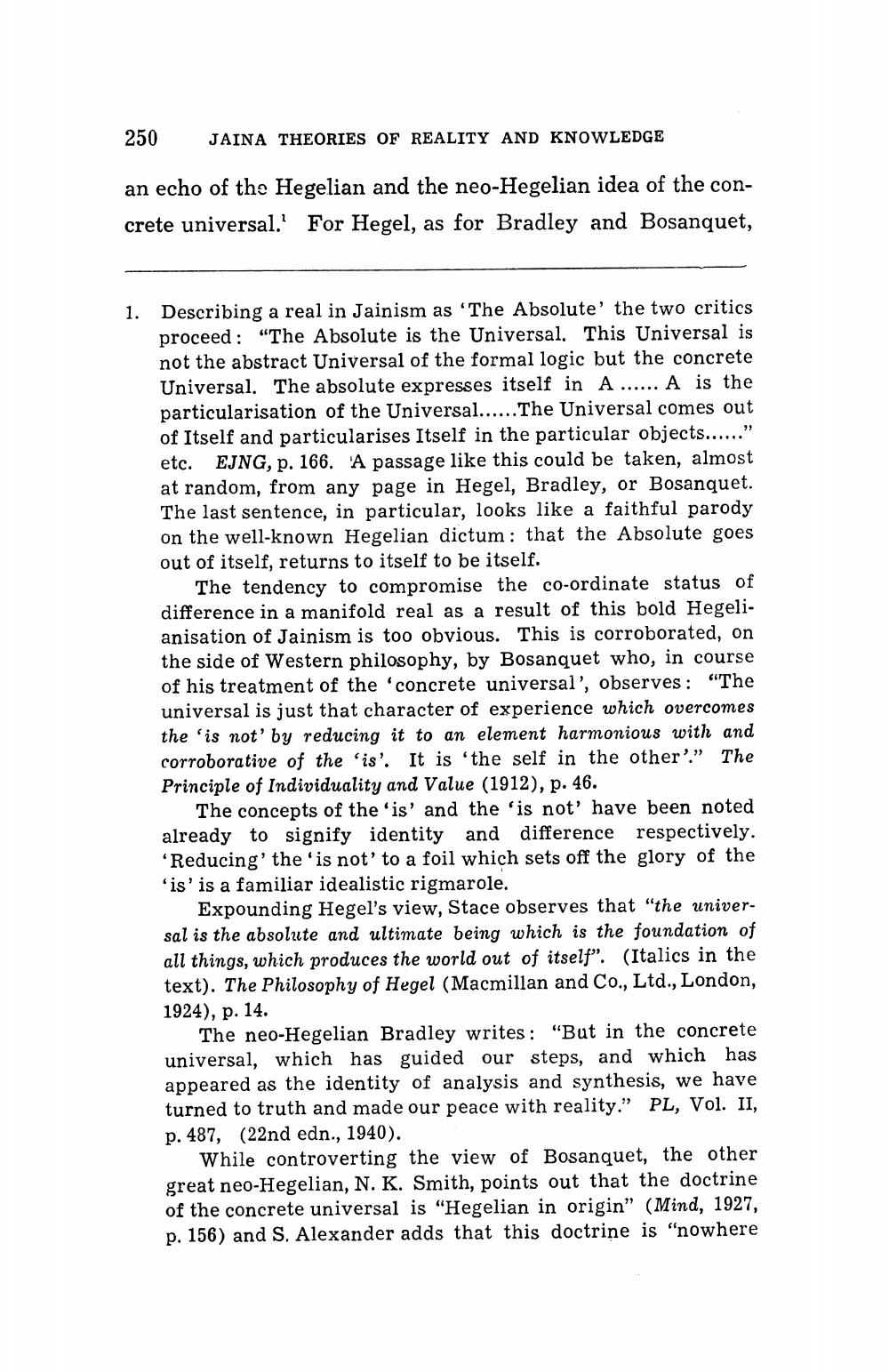________________
250
JAINA THEORIES OF REALITY AND KNOWLEDGE
an echo of the Hegelian and the neo-Hegelian idea of the concrete universal.' For Hegel, as for Bradley and Bosanquet,
1. Describing a real in Jainism as "The Absolute' the two critics
proceed: “The Absolute is the Universal. This Universal is not the abstract Universal of the formal logic but the concrete Universal. The absolute expresses itself in A ...... A is the particularisation of the Universal...... The Universal comes out of Itself and particularises Itself in the particular objects......" etc. EJNG, p. 166. A passage like this could be taken, almost at random, from any page in Hegel, Bradley, or Bosanquet. The last sentence, in particular, looks like a faithful parody on the well-known Hegelian dictum : that the Absolute goes out of itself, returns to itself to be itself.
The tendency to compromise the co-ordinate status of difference in a manifold real as a result of this bold Hegelianisation of Jainism is too obvious. This is corroborated, on the side of Western philosophy, by Bosanquet who, in course of his treatment of the concrete universal', observes: "The universal is just that character of experience which overcomes the 'is not' by reducing it to an element harmonious with and corroborative of the 'is'. It is the self in the other'.” The Principle of Individuality and Value (1912), p. 46.
The concepts of the 'is' and the 'is not have been noted already to signify identity and difference respectively. 'Reducing' the 'is not' to a foil which sets off the glory of the 'is' is a familiar idealistic rigmarole.
Expounding Hegel's view, Stace observes that "the universal is the absolute and ultimate being which is the foundation of all things, which produces the world out of itself”. (Italics in the text). The Philosophy of Hegel (Macmillan and Co., Ltd., London, 1924), p. 14.
The neo-Hegelian Bradley writes: "But in the concrete universal, which has guided our steps, and which has appeared as the identity of analysis and synthesis, we have turned to truth and made our peace with reality." PL, Vol. II, p. 487, (22nd edn., 1940).
While controverting the view of Bosanquet, the other great neo-Hegelian, N. K. Smith, points out that the doctrine of the concrete universal is "Hegelian in origin" (Mind, 1927, p. 156) and S. Alexander adds that this doctrine is "nowhere




